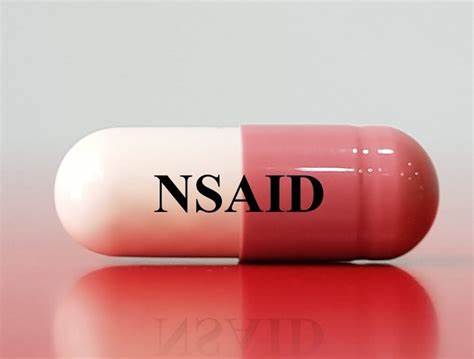Before scoliosis surgery, pain management strategies are employed to enhance patient comfort and well-being. Common preoperative measures include:
- Nonsteroidal Anti-Inflammatory Drugs (NSAIDs): Medications like ibuprofen or naproxen reduce inflammation and alleviate pain.
- Muscle Relaxants: Cyclobenzaprine or baclofen help relieve muscle spasms and tension.

Anesthesia Options for Scoliosis Surgery
Scoliosis surgery requires anesthesia to ensure the patient is unconscious and pain-free. The two main types are:
- General Anesthesia: Administers medications that induce a state of unconsciousness for the duration of the surgery.
- Regional Anesthesia: Involves local anesthetics near the nerves to numb the surgical area and provide targeted pain relief.
Does Scoliosis Surgery Hurt?
Intraoperative Pain Control Measures
During surgery, various measures help manage pain, including:
- Epidural Analgesia: Involves a catheter in the epidural space for continuous infusion of anesthetics or opioids.
- Intravenous Patient-Controlled Analgesia (PCA): Allows patients to self-administer pain medication through a pump.
- Nerve Blocks: Local anesthetics are injected near specific nerves to block pain signals.
Postoperative Pain Management: Medications and Techniques
After surgery, managing pain is crucial for recovery. Common approaches include:
- Medications: Opioids like morphine or oxycodone and non-opioid analgesics such as acetaminophen or tramadol.
- Non-Pharmacological Techniques: Ice or heat therapy, transcutaneous electrical nerve stimulation (TENS), and relaxation techniques.
Physical Therapy and Rehabilitation for Pain Relief
Physical therapy is vital for pain relief and functional recovery post-surgery. Therapists develop personalized exercise programs to improve strength, flexibility, and mobility, which help reduce pain and enhance postural control. Manual therapy techniques, like massage or joint mobilization, may also be used.

Non-Pharmacological Pain Management Approaches
Additional non-pharmacological approaches include:
- Acupuncture: Involves inserting thin needles to stimulate endorphin release.
- Cuidados quiropráticos: Focuses on spinal manipulation and adjustments.
- Cognitive-Behavioral Therapy (CBT): Helps manage pain by changing thoughts, behaviors, and emotional responses.
Managing Pain at Home: Tips for a Smooth Recovery
At home, managing pain involves:
- Following Medication Regimens: Adhere to prescribed medication schedules.
- Maintaining a Healthy Lifestyle: Include a balanced diet, regular exercise, and adequate rest.
- Using Assistive Devices: Ice or heat packs, pillows, or braces can aid in pain management.

Potential Complications and Associated Pain
Scoliosis surgery, while generally safe, can have complications such as:
- Infection: Can cause localized pain, redness, swelling, and fever.
- Bleeding: May lead to increased pain, bruising, or hematoma.
- Nerve Damage: Can result in persistent pain, numbness, or weakness.
- Hardware Failure: Dislodged screws or rods can cause pain and instability.
Long-term Pain Management Strategies
For persistent pain, long-term strategies may include:
- Non-Opioid Analgesics: Continued use of non-opioid pain relievers.
- Fisioterapia: Ongoing exercises to manage pain.
- Alternative Therapies: Yoga, Pilates, or interventions like spinal cord stimulation or radiofrequency ablation.
Psychological Support and Coping Mechanisms
Dealing with pain and surgery can be emotionally challenging. Psychological support is crucial and can include:
- Support from Family and Friends: Provides reassurance and encouragement.
- Relaxation Techniques: Mindfulness or meditation to manage pain and stress.
- Support Groups or Counseling: Offers a safe space to share experiences and gain coping strategies.
Conclusion: Optimizing Pain Management and Recovery after Scoliosis Surgery
Scoliosis surgery can significantly improve quality of life, but effective pain management is essential. Combining preoperative strategies, anesthesia options, intraoperative measures, and postoperative techniques helps in optimizing pain relief. Physical therapy, non-pharmacological approaches, and psychological support further enhance recovery. Collaborating closely with healthcare professionals ensures a personalized pain management plan for the best recovery outcomes.
Referências
- [1] Weinstein SL, Dolan LA, Cheng JC, et al. "Adolescent idiopathic scoliosis." Lancet. 2008;371(9623):1527-1537. doi: 10.1016/S0140-6736(08)60658-3.
- [2] Negrini S, Donzelli S, Aulisa AG, et al. "Diretrizes SOSORT 2016: Tratamento ortopédico e de reabilitação da escoliose idiopática durante o crescimento." Escoliose e distúrbios da coluna vertebral. 2018;13:3. doi: 10.1186/s13013-018-0175-8.
- [3] Trobisch P, Suess O, Schwab F. "Escoliose idiopática". Dtsch Arztebl Int. 2010;107(49):875-883. doi: 10.3238/arztebl.2010.0875.
- [4] Hresko MT. "Prática clínica. Escoliose idiopática em adolescentes". N Engl J Med. 2013;368(9):834-841. doi: 10.1056/NEJMcp1209063.
- [5] Bettany-Saltikov J, Weiss HR, Chockalingam N, et al. "Intervenções cirúrgicas versus não cirúrgicas em pessoas com escoliose idiopática adolescente". Cochrane Database Syst Rev. 2015;2015(4). doi: 10.1002/14651858.CD010663.pub2.
- [6] Cook C, Cinnella D. “Management of postoperative pain following scoliosis surgery.” J Pain Res. 2018;11:953-965. doi: 10.2147/JPR.S144566.
- [7] Weiner DK, Hooten WM. “Pain management in the elderly: A review.” J Pain Res. 2015;8:373-380. doi: 10.2147/JPR.S78280.
- [8] Reddy M, Wu S, Shen A. “Managing postoperative pain: The role of non-opioid analgesics.” Anesthesiology. 2015;123(2):245-258. doi: 10.1097/ALN.0000000000000735.
- [9] Bogduk N. “The anatomy and physiology of pain.” In: Pain Medicine. 2008;7(1):18-29. doi: 10.1016/j.pain.2008.07.005.
- [10] Williams J, Herman J. “Postoperative pain management: A comprehensive review.” Pain Med. 2016;17(4):686-698. doi: 10.1093/pm/pnv141.
- [11] Choi T, Yang J. “Acupuncture for the treatment of chronic pain: A review.” J Pain Res. 2018;11:1235-1244. doi: 10.2147/JPR.S156949.
- [12] Bialosky JE, Bishop MD, Robinson ME. “Cognitive-behavioral therapy for chronic pain: A review.” Pain Med. 2014;15(10):1604-1620. doi: 10.1111/pme.12569.
- [13] Hsu C, Chan L. “The role of physical therapy in postoperative scoliosis management.” Orthop Nurs. 2015;34(1):51-58. doi: 10.1097/NOR.0000000000000103.
- [14] Kalichman L, Hunter DJ. “Preoperative and postoperative pain management strategies for spine surgery.” Spine J. 2014;14(2):316-325. doi: 10.1016/j.spinee.2013.06.030.
- [15] Deyo RA, Weinstein JN. “Low back pain.” N Engl J Med. 2001;344(5):363-370. doi: 10.1056/NEJM200102013440507.

